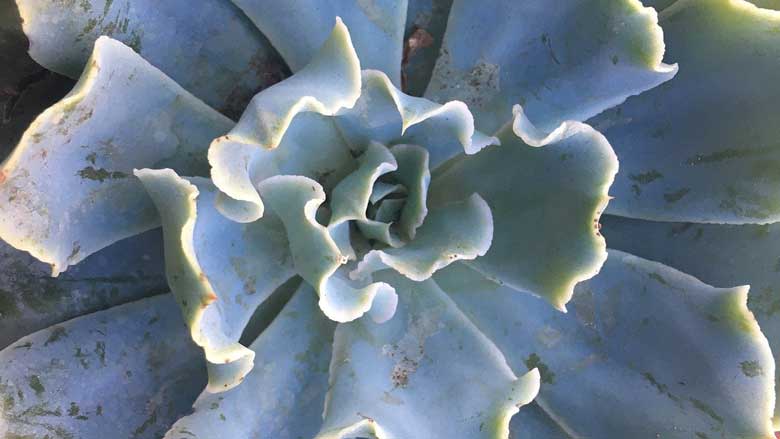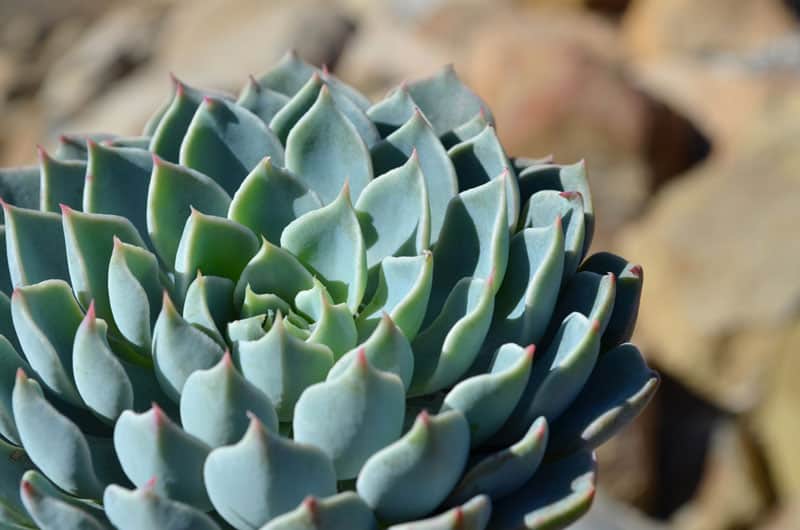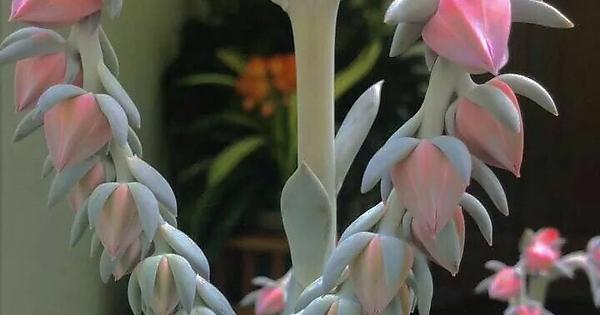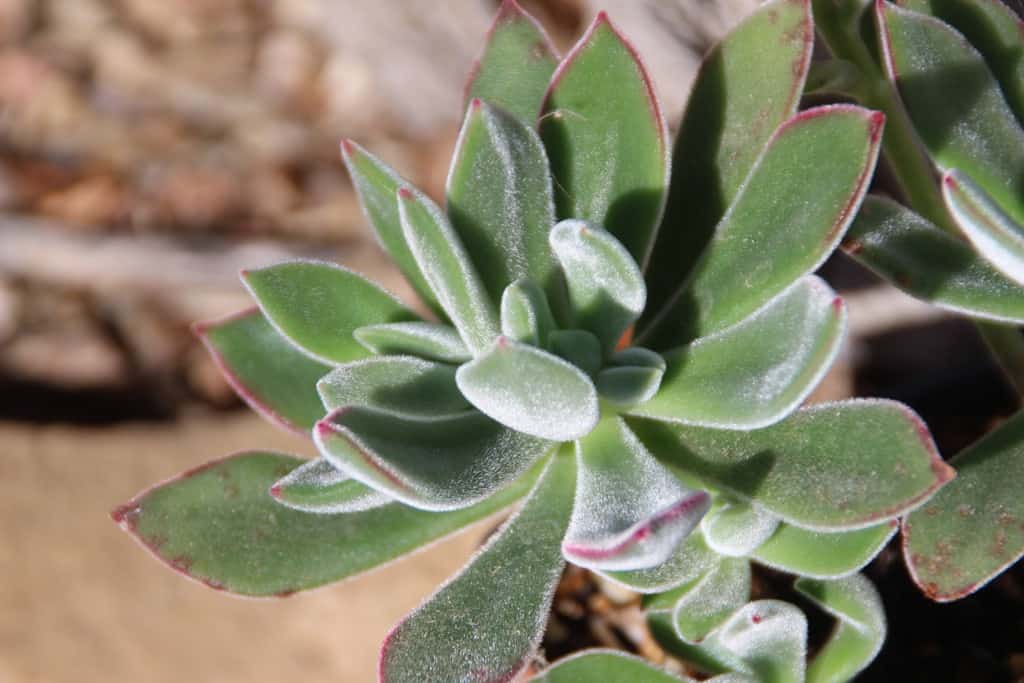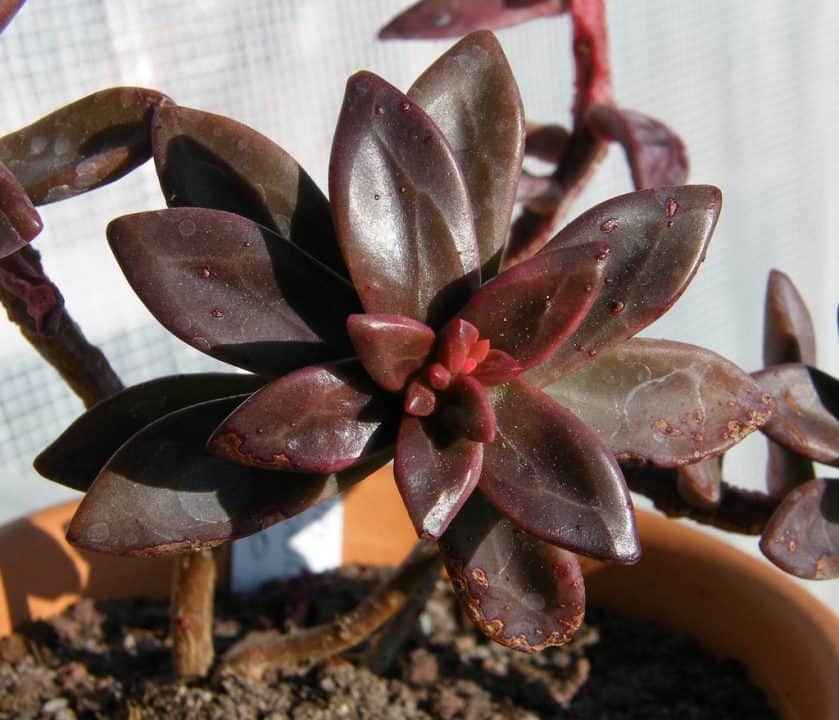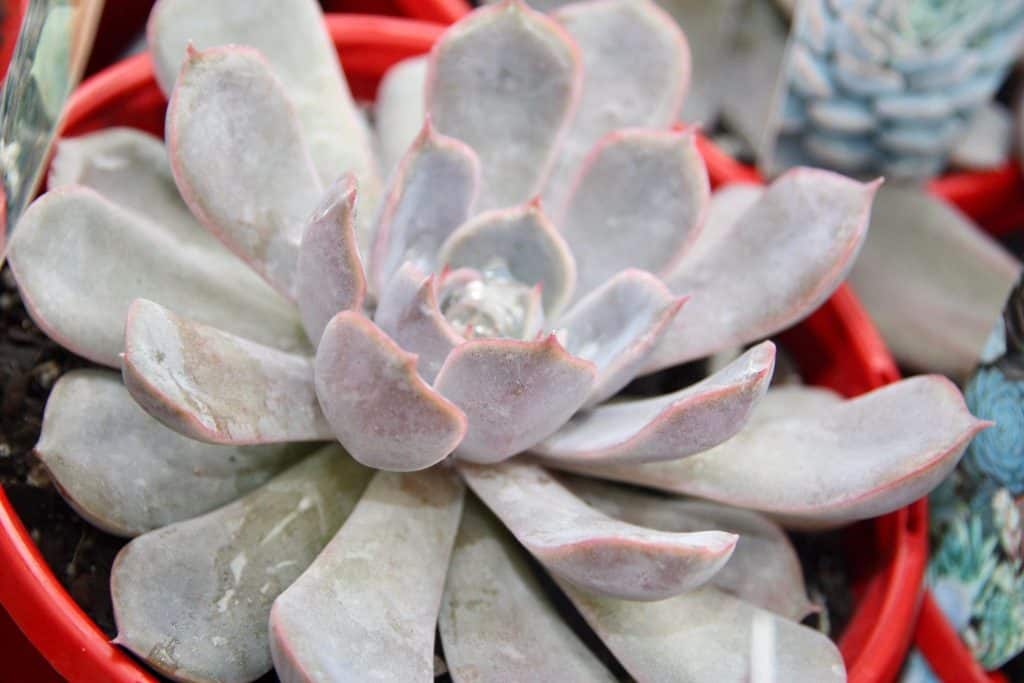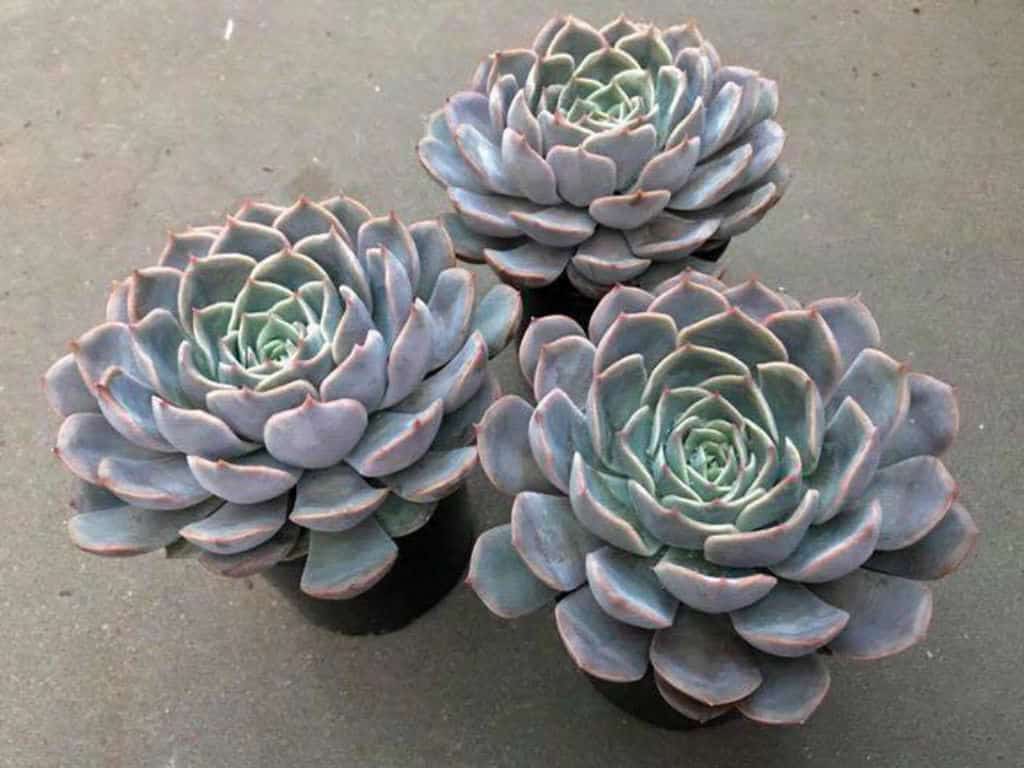Echeveria ruffles are succulent plants that produce blue, purple, green, and white flowers, turning yellow as they age. Native to Mexico, this type of echeveria doesn’t like direct sunlight but prefers partial shade instead.
Loving the look of succulents, but intimidated by the care required? You can still grow them! One of the easiest succulents to grow indoors, echeveria ruffles don’t require any special light or watering.
Echeveria ruffles are succulent plants that produce blue, purple, green, and white flowers, turning yellow as they age. This type of echeveria doesn’t like direct sunlight but prefers partial shade instead. If you’re looking to add these unique plants to your succulent collection, read on for care and growing tips to ensure your ruffled echeveria stays happy and healthy year-round.
Origin and distribution
Echeveria ruffles is a native of Mexico and can be found in mountainous regions. It is also known as the ruffle succulent because of its ruffled leaves. The plant grows to a height of 12 inches and has a rosette shape. The leaves are green with red tips and the flowers are pink, purple, or white.
Both the soil and climate should be very well-drained, which means sandy loam soil that is slightly acidic. Echeveria ruffles need at least 6 hours of full sun daily and it does not like being watered from overhead so care should be taken when watering this type of succulent so that water does not get on the leaf stems, which could lead to rot.
Echeveria ruffles propagation
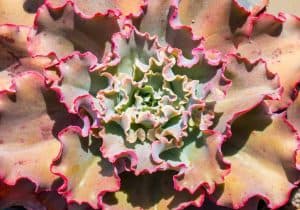
Echeveria ruffles is a beautiful and easy-to-grow succulent. It can be propagated by leaves or cuttings. To propagate by leaves, simply remove a leaf from the plant and allow it to callous over for a few days. Then, plant the leaf in well-draining soil and water it lightly. To propagate by cuttings, cut a stem from the plant and allow it to callous over for a few days.
Afterward, plant the cutting in a pot with cactus/succulent soil mix. Keep your potting mix moist and shaded until you see roots sprouting from the base of your cutting. Finally, place your new echeveria ruffle out into direct sunlight and make sure that you don’t overwater it!
Remember, these plants like to dry out between watering cycles. If they are watered too much, they will develop problems such as root rot.
A good fertilizer is all you need for optimal growth and vibrant colors! A slow-release granular fertilizer such as Osmocote should work great every three months; just sprinkle on top of the soil surface and water thoroughly afterward.
To keep your plants blooming, pinch off any buds when they appear at the tips of stems throughout springtime and summertime.
Echeveria ruffles care information
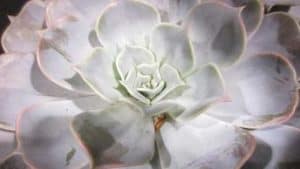
Echeveria ruffles are a type of succulent that is easy to care for. They don’t require much water and can tolerate some neglect. These plants prefer bright, indirect light but can also tolerate low-light conditions. Echeveria ruffles are low-maintenance plants that make a great addition to any indoor or outdoor space.
Light requirement
Echeveria ruffles need bright light to maintain their vibrant colors. However, too much direct sunlight can cause the leaves to scorch. If you live in a hot climate, it’s best to grow echeveria ruffles in a shady spot. Direct sunlight should be avoided during the hottest hours of the day.
In most cases, echeveria plants will do well indoors with artificial lighting or indirect natural light from windows on the north side of your home. As long as they are watered regularly and given enough light, these plants are very easy to care for and easy to maintain throughout all seasons.
Soil/potting mix
Echeveria ruffles need a well-draining soil or potting mix. You can use a cactus mix or make your own by mixing together equal parts perlite, sand, and potting soil. When planting new Echeveria in the ground, place it at least six inches deep so that the roots are well insulated from extreme temperatures on both ends of the spectrum.
Watering
Echeveria ruffles need to be watered about once a week, or when the soil is dry to the touch. Be careful not to overwater, as this can lead to root rot. The best way to water is to use a drip system or soaker hose. Allow the water to seep into the soil slowly so that it can reach the roots.
If you are using a spray nozzle on your hose, do not point it at the leaves and stems of your plant. Use the lower pressure setting and only get them wet if they are dirty.
Fertilizer
If you want your Echeveria to grow and thrive, you need to fertilize it regularly. A good rule of thumb is to fertilize once a month during the growing season and every other month during the winter.
When choosing a fertilizer, look for one that is high in phosphorus, as this will encourage blooming. You can apply fertilizer either by top dressing or by watering it directly into the soil.
If applying fertilizer by top dressing, scatter the granules on the surface and then water them into the soil. If applying by watering, make sure to follow up with enough water so that the nutrients are dispersed evenly throughout the potting medium.
Temperature
Echeveria ruffles are a type of succulent that can tolerate a wide range of temperatures, from hot and sunny to cool and shady. However, they prefer temperatures that are on the cooler side, around 60-70 degrees Fahrenheit. If the temperature gets too hot, the leaves will start to ruffle and if it gets too cold, the leaves will turn red or brown.
Humidity
Echeveria ruffles do best in humid environments. If your home is on the dry side, you can create a more humid environment for your plant by placing it on a pebble tray filled with water. Be sure to mist your plant regularly, and keep an eye out for signs of stress, such as wilting or browning leaves.
The ideal humidity range is between 50-60%. A quick way to check if your plants need watering is to feel the soil; if it feels light and sandy, it needs watering.
Pruning
You can prune your echeveria ruffles as needed to keep it looking its best. To do this, simply snip off any dead or dying leaves at the base. You can also remove any offsets (baby plants) that are growing too close to the main plant.
When pruning, be sure to use clean, sharp shears to avoid damaging the plant. Echeveria ruffles like bright indirect light and should not be placed in direct sunlight. They thrive in a range of temperatures between 50-90 degrees Fahrenheit, but they prefer nighttime temperatures around 60 degrees Fahrenheit.
It is important to water echeveria regularly, but don’t overwater them! Allow their soil to dry out before watering again – overwatering will kill them faster than anything else!
When to repot
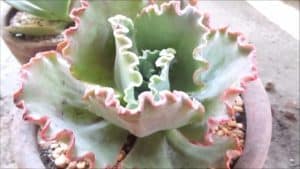
It’s generally best to repot your echeveria ruffles every two to three years. If you notice that the plant is starting to look pot-bound (roots are growing out of the drainage holes, for example), it’s time for a new pot. Be sure to use a well-draining potting mix and a pot that’s only slightly larger than the current one.
Fill in around the roots with soil, but don’t pack it down. Put just enough water in to moisten all the soil–don’t overwater!
Dormancy/Winter rest
Echeveria ruffles need a winter rest period in order to bloom. During this time, the plant will stop growing and may even lose some leaves. It’s important to keep the plant relatively dry during this time, as too much water can lead to rot.
Watering should be reduced to once every few weeks, and fertilizer should not be applied. The plant will typically resume growth in late winter or early spring. Keep watering at the same rate (once every 1-2 weeks) that you did before dormancy, fertilize according to label instructions (every 3-4 months), and continue with light exposure (a few hours of direct sunlight each day).
When returning from dormancy, give the plant a half dose of liquid fertilizer for one month. When new shoots emerge from the soil surface, fertilize at full strength for two months.
Echeveria ruffles flower & fragrance
The Echeveria ruffles are a beautiful plant that produces lovely pink flowers. Though the plant is not fragrant, the flowers are very pretty and make a great addition to any garden. It is a succulent plant, which means it stores water in its leaves, so it does not need to be watered often. When watering, be sure to use only distilled or rainwater as tap water can harm the plant.
Growth rate
Echeveria ruffles is a relatively fast grower, so you can expect it to fill in nicely over the course of a season. It’s best to plant this succulent in well-draining soil and give it plenty of sunlight. Water when the soil is dry to the touch, and fertilize monthly during the growing season.
Toxicity
Echeveria ruffles are not toxic to people or pets. However, the sap from the plant can cause skin irritation in some people. If you have sensitive skin, it’s best to wear gloves when handling this plant. Echeveria ruffles are also known to be somewhat drought-tolerant. So, if you forget to water them for a week or so, they’ll likely be just fine.
USDA hardiness zones
Echeveria ruffles grow best in USDA hardiness zones 10 to 11 but can be grown indoors as well. As with all succulents, echeveria ruffles require plenty of sunlight to thrive. These plants can take up to 12 hours of sunlight a day and should be placed on a southern or western window sill for optimal light exposure.
Pests and diseases
Echeveria ruffles are generally quite resistant to pests and diseases, but there are a few things to watch out for. Aphids, mealybugs, and scale can all attack echeverias, so be on the lookout for these little critters.
If you see any, blast them with a strong stream of water or use insecticidal soap. Overwatering can also lead to problems like root rot, so make sure to let your echeveria ruffles dry out between watering.
